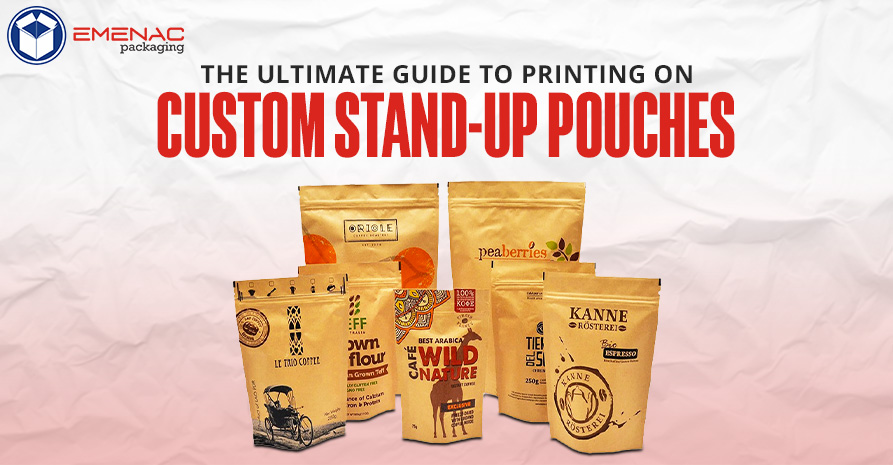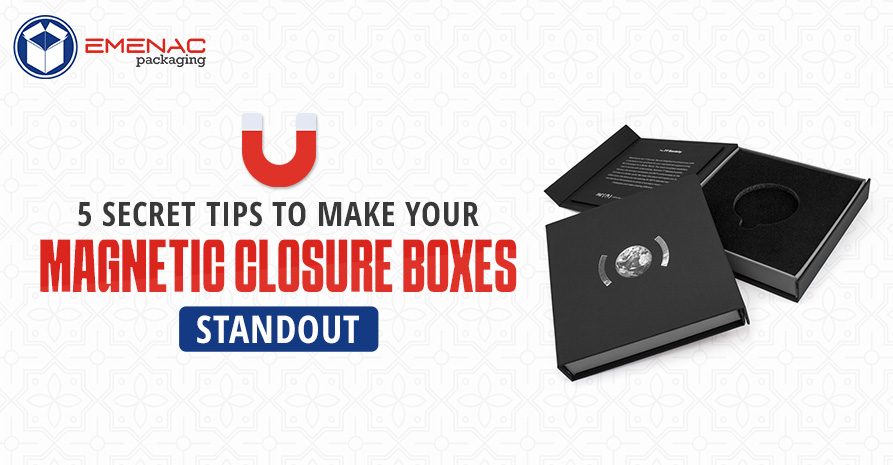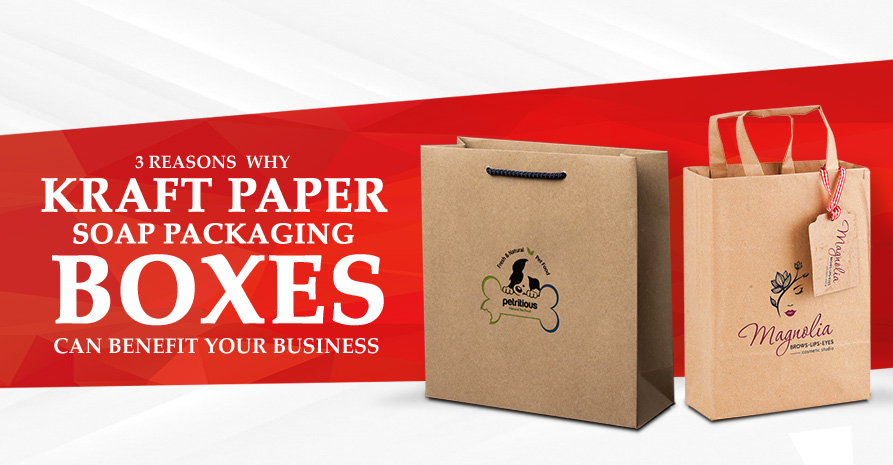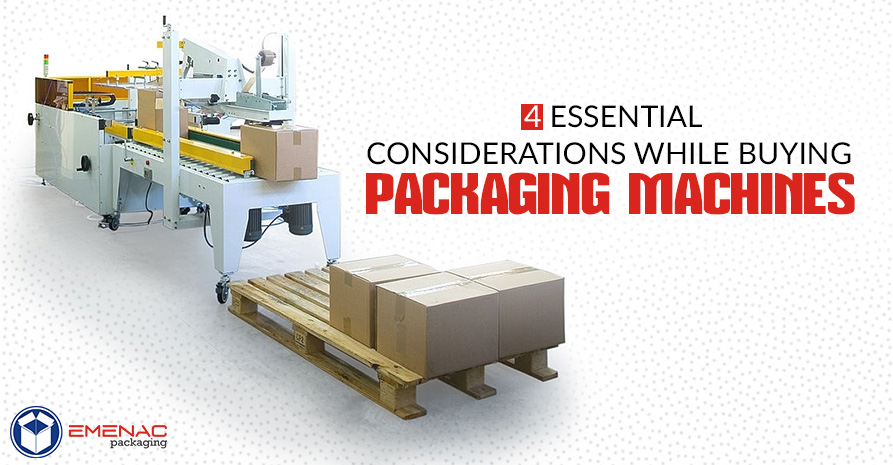The Ultimate Guide to Printing On Custom Stand-Up Pouches

In today’s competitive market, using good packaging is key to successful businesses. Time is gone when heft packaging boxes are used to pack goods. In the modern era, Stand-up pouches have become a popular choice. They mix both usefulness and good looks.
On the other side, they are great marketing tools too. The way you print on these pouches greatly affects your brand identity. It influences customers on how they perceive your brand goods.
This blog will highlight how to use different printing techniques on custom stand-up pouches, helping to make smart design decisions.
Types of Stand-Up Pouches Available
A massive array of stand-up pouches is available in markets, letting choose the suitable one according to your needs.
• Stand Up Pouch
• Zipper Pouches
• Kraft Paper Stand Pouch
• Flat Bottom pouches
• Stand Up Pouch with Window
• Matt Silver Stand-Up Pouches
• Side Seal Pouches
• Spouted Pouches
Step-By-Step Guide to Printing On Stand-Up Pouches
Printing on stand-up pouches is a careful process. It needs attention to detail.
Here are some simple yet important steps that ensure your custom printed pouches meet good quality standards and print professionally.
Step #1 – Creating Your Design
Having a good design is the key to great stand-up pouches. Right? So, collaborate with a talented packaging designer to bring your creativity to real-time. Use cutting-edge printing techniques to add great details, vibrant colours, and striking graphics.
When designing, think about the size and shape of the pouch. Use the best quality material to craft custom stand-up pouches for durability and sustainability. Optimise the surface of the pouch for branding, product information, and visuals in a catchy way. Bold yet clear typography to add your brand messages can be a great option to make the pouch more attractive.
Step # 2 – Selecting the Printing Method
Choose the right printing technique as per the quality of material that you opt for creating stand-up pouches. To put it simply, make sure that pouches can withstand the printing process and offer clear results. Printing techniques or methods depend on several factors such as the order size, the complexity of the design, and your budget.
Digital printing is a great option for small batches or designs that need changes often.
Screen printing works well for simple designs, especially on dark pouches. On the other hand, flexo printing is best for high-volume orders. It creates consistent and vibrant prints.
Different printing methods use various ink systems and techniques. This will affect how the final product looks and how long it lasts. By understanding each method’s importance and budget, you can make a smart choice that meets your needs efficiently.
Step # 3 – Finalising and Proofing the Print
Before starting the mass printing process, you need to finish the design and do careful proofing. This is important to prevent any expensive mistakes. In this step, you need to check every detail for accuracy and consistency.
Make sure to check the colour accuracy, image resolution, text clarity, and the correct placement of all elements. Doing this, ensures the final printed pouches meet your expectations and brand standards.
Step # 4 – The Printing Process
Choose modern printing techniques for creating high-quality prints. It captures fine details and vibrant colours. This method is often used for big orders.
Flexographic printing is also a popular choice. It is flexible and cost-effective, working well with different pouch materials and designs. Digital printing is known for its quick turnaround time. It is perfect for smaller orders or those that need different data printed.
Step # 5 – Quality Check and Finishing Touches
Once the printing process is done, it’s important to do a thorough quality check. This helps make sure that all pouches meet the needed standards. You need to look at the pouches for any printing problems. After the quality check, final steps are taken. This can mean cutting the pouches to the right size, putting on closures like zippers or spouts and packing is ready for delivery.
Comparing Printing Techniques
Each printing method has its own benefits and drawbacks. It’s important to choose the right one that matches the needs of your project.
- Flexography is fast and cost-effective for long runs. This makes it a good choice for large pouch orders.
- Digital printing also offers a fast turnaround. It is popular for high-end results and ideal for small printing orders.
Pros and Cons: Digital Printing VS Flexography
In the present world of printing, businesses are often confused about choosing between flexography printing or digital printing for their packaging. Well, no doubt each technique has its own benefits and drawbacks that impact the brand identity. The project size and preferences like the complexity of design also affected by these techniques.
Let’s break down some pros and cons of both printing techniques, helping you to make wise printing decisions:
Digital Printing
Pros:
- Short Runs Efficiency: Ideal for small print runs or custom designs. It is a cost-effective technique of printing.
- Eco-Friendly: Digital printing uses less material and fewer chemicals, ultimately it’s an Eco-friendly printing option.
- High-Quality Output: Digital printing provides crisp and detailed images along with exciting colours.
Quick Turnaround: Minimal setup time allows for faster production.
Customizability: Supports variable data printing for personalized designs or limited editions.
Cons:
- Durability Issues: it is less durable as compared to flexographic results.
- Higher Cost per Unit: In small order, special for small businesses it is an expensive print technique as compared to flexography.
- Slower Printing Speed: As it is best for small orders, so high-volume production is less efficient.
Flexography
Pros:
- Cost-Effective for Large Volumes: Cost-effective for high-volume printing. For bulk orders, it helps to reduce the per-unit printing cost.
- Durable Inks: Ideal for long-lasting and weather-resistant printing. Best for bulk orders and premium results.
- Broad Application: Commonly used in industries like food packaging, labels, and corrugated boxes.
Cons:
- High Setup Costs: Flexography requires plates and proper printing setup, making it costly.
- Time-Consuming Adjustments: Changes in design require new plates, increasing turnaround times.
- Limited Customisation: For small batches, it is not easy to customise.
Final Notes
Creativity and smart decisions are compulsory to print on custom stand-up pouches. First, you need to know the types of pouches. Then, choose the right materials and the best printing techniques. These are important steps to create prints that look great, last long and represent your brand. By following the steps, you can make sure your custom pouch printing is top-notch. Choose any flexography or digital printing that suits you best. Remember, with premium printing, you can stand out in the market and create a strong impression on consumers.
Share This



